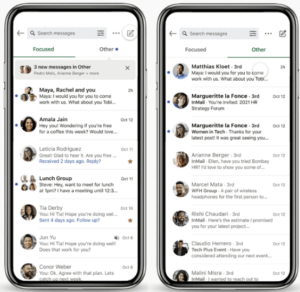September 2022 Social Media Updates
In September, the push to compete with TikTok continues with new updates from Meta and YouTube. LinkedIn tries to clean up spam, and TikTok attempts to curb political influence from social media. Read on to check out the latest social media updates!
Instagram and Facebook
In their continued quest to make Reels the main attraction on Facebook and Instagram, Meta will introduce Facebook Reels API, allowing users to share public Reels through third-party tools.
This change will be huge for social media managers who can create more Reels for brands, one of the fastest growing forms of content.
TikTok

Misinformation and disinformation have been at the forefront of conversations around social media and politics for some time now, especially after the ground-breaking documentary, The Social Dilemma, exposed the lack of regulations by tech companies that led to unintentional and intentional political and social manipulation.
TikTok is rolling out a series of new updates to help mitigate this, most likely due to the 2022 mid-term elections coming up. While the app has long prohibited monetizing political ads and creator partnerships, they’re taking this further by applying this restriction on the account level. Accounts linked to political parties or politicians will not be able to create ads or accept donations or gifts.

LinkedIn’s latest is their new Focused Inbox, which is an AI-driven inbox that will separate “valuable” messages into a “Focused” inbox and other messages into “Other.” While it will be nice to have spam messages filtered out, how the machine learning will decide what is “valuable” and what isn’t will be something to keep an eye on, primarily if you rely on cold pitches or utilize Sponsored InMails as part of your business marketing strategy.

YouTube
At this point, we may sound like a broken record, but in another attempt to compete with TikTok, YouTube will be launching a path for creators to receive direct monetization from their Shorts in 2023, which will make it the most appealing platform for short-form creators.
The short-form nature has made it difficult for apps to find a way for creators to monetize their videos at the same level of success as long-form videos, given the conundrum of where to place ads. Their plan is to run ads in between the Shorts and then divide up the 45% allocated to the creators based on their Shorts’ views.
While the money is pooled, basing it on the views is the closest YouTube can get to paying creators what they would earn on long-form videos (though the payout is 55% to creators on long-form videos).
Knowing which social media platforms to utilize for your business and creating data-driven campaigns that deliver results can take time and effort. Therefore, we offer 30-minute free consultations for enterprise-level companies looking to harness data for maximum impact. If you’re looking to evolve your digital efforts click the link above and let’s chat!
What We’re Reading:
- Chick-fil-A In Deep Hot Sauce
- Google Search is Out. Social Search is In
- ‘Stop trying to be TikTok’ – Instagram fans are over it
- 3 reasons why Instagram Reels is failing to compete with TikTok (Digital Trends)
- Twitter has rolled out this feature for visually impaired people (Gadgets Now)
- Should brands hire creators over agencies to produce high-fidelity content? (Bank Notes)




